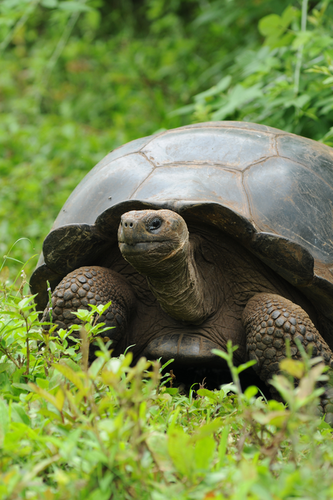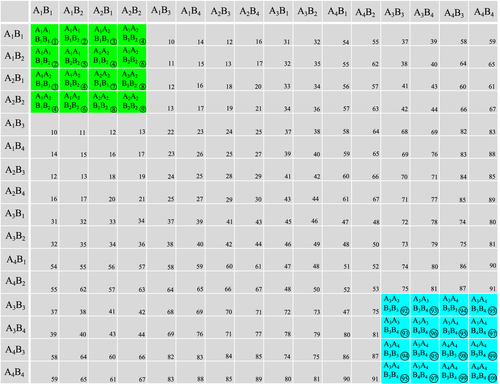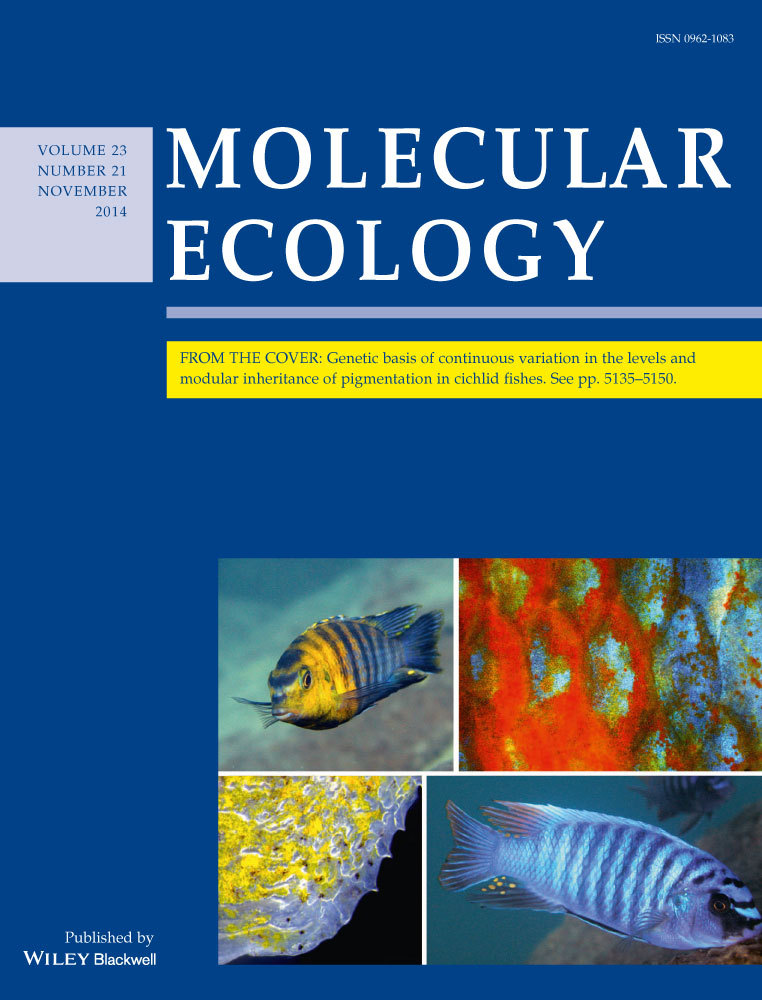Fission and fusion in island taxa – serendipity, or something to be expected?
Abstract
A well-used metaphor for oceanic islands is that they act as ‘natural laboratories’ for the study of evolution. But how can islands or archipelagos be considered analogues of laboratories for understanding the evolutionary process itself? It is not necessarily the case that just because two or more related species occur on an island or archipelago, somehow, this can help us understand more about their evolutionary history. But in some cases, it can. In this issue of Molecular Ecology, Garrick et al. (2014) use population-level sampling within closely related taxa of Galapagos giant tortoises to reveal a complex demographic history of the species Chelonoidis becki – a species endemic to Isabela Island, and geographically restricted to Wolf Volcano. Using microsatellite genotyping and mitochondrial DNA sequencing, they provide a strong case for C. becki being derived from C. darwini from the neighbouring island of Santiago. But the interest here is that colonization did not happen only once. Garrick et al. (2014) reveal C. becki to be the product of a double colonization event, and their data reveal these two founding lineages to be now fusing back into one. Their results are compelling and add to a limited literature describing the evolutionary consequences of double colonization events. Here, we look at the broader implications of the findings of Garrick et al. (2014) and suggest genomic admixture among multiple founding populations may be a characteristic feature within insular taxa.
Understanding the significance of patterns of shared genetic variation among species or populations is frequently a thorn in the side of population geneticists. Although progress is being made through the development of analytical methods, distinguishing between gene flow and incomplete lineage sorting remains a challenge (e.g. Navascués et al. 2014). Island archipelagos potentially offer a geographical framework that can help to distinguish between these two explanations. The geographical isolation of islands means that the colonization of new islands, or the exchange of alleles among existing island populations, is expected to involve only one or a few individuals for taxa with naturally low dispersal capacity. As a consequence of this dynamic, the sharing of ancestral genetic variation among island taxa of low dispersal ability will be limited. Within such a framework, Nietlisbach et al. (2013) were able to exclude an explanation of incomplete lineage sorting among mockingbirds of the Galápagos archipelago to reveal a hybrid origin between Mimus parvulus and M. melanotis for the Genovesa Island endemic subspecies M. parvulus bauri. In this issue of Molecular Ecology, Garrick et al. (2014) reveal the Galápagos giant tortoise species Chelonoidis becki (Fig. 1) to be in the process of admixture among two founding gene pools. Underlying the apparent morphological uniformity of C. becki, Garrick et al. (2014) were able to distinguish two gene pools, derived from two separate colonization events involving C. darwini from a neighbouring island, that are in the process of admixing. By calibrating their molecular data, they estimate an interval of approximately 150 000 years between the two colonization events, and using simulation analyses and forward in time projections, they estimate eventual complete introgression of the two C. becki gene pools.

The population genetic and adaptive consequences of genomic admixture
The results of Garrick et al. (2014) offer an interesting insight into island colonization dynamics and their consequences. In the context of island colonization, founding events that involve only one or a few individuals will result in low genetic diversity within the founding populations, which can only be recovered over an evolutionary timescale of mutation. Genetic admixture provides a potential escape from reduced genetic variation via the production of novel genotypic combinations of alleles, coupled with new opportunities for recombination among divergent genomes that may also facilitate adaptation within novel adaptive landscapes (Mallet 2007). In the case of C. becki, Garrick et al. (2014) note that the fusion of the two gene pools has little consequence for population-level heterozygosity, as heterozygosity is already high in both gene pools. However, introgression of the two genomes does result in a substantial increase in allelic richness, which suggests an increase in genotypic variation, and thus adaptive potential (Fig. 2). Mallet (2007) has noted that admixture of divergent gene pools may facilitate speciation and adaptive radiation, and the evolutionary success of the Hawaiian silversword alliance provides one probable example. The reservoir of adaptive potential contained within the allopolyploid ancestor of the silversword alliance, resulting from the hybridization of two ecologically divergent species, has been suggested to be a factor for their evolutionary success (Barrier et al. 1999). In the case of C. becki, it seems unlikely that genomic admixture will be the source of subsequent radiation (cladogenesis). However, an increase in genetic variation, and thus adaptive potential, could facilitate anagenetic change within C. becki, potentially contributing to the increased phenotypic divergence within the genus Chelonoidis, something that has been suggested for the mockingbirds of Galápagos (Nietlisbach et al. 2013).

Genomic admixture and island colonization dynamics
So, to what extent are the results of Garrick et al. (2014) an oddity – an interesting, but potentially low frequency event, chanced upon by serendipity? Or alternatively, could genomic admixture perhaps be a significant player in the field of island biogeography? In the case of C. becki, mitochondrial haplotypes shared with a third species, C. vandenberghi, suggest that the observations of Garrick et al. (2014) may not be a one-off event within the history of Chelonoidis. Considering the broader diversity on oceanic islands, there are good reasons to expect a more than minor role for admixture among multiple founding lineages. High colonization rates among islands will push populations towards genetic homogeneity, while low colonization rates will facilitate divergence among populations on different islands and high rates of inter-island cladogenetic speciation. At intermediate rates, there are two potential scenarios: (i) when barriers to gene flow are complete, founding taxa will remain genetically distinct, facilitating inter-island cladogenetic speciation; (ii) when barriers to gene flow may not have reached completion, the potential for admixture may arise, which may either inhibit or facilitate inter-island cladogenetic speciation. The data of Garrick et al. (2014) clearly point to the inhibition of cladogenetic speciation, with the two colonization events from Santiago to Isabela resulting in only one species. However, if admixture results in negative fitness consequences, divergent evolution may be facilitated. Mitochondrial and nuclear DNA sequence data have been used to infer a double colonization of the Canary Island of La Palma from El Hierro by the beetle species Aphanarthrum glabrum. The molecular data indicate a limited period of admixture between the two founding populations, presumably with negative fitness consequences, facilitating reproductive character displacement and the completion of reproductive isolation (Jordal et al. 2006).
The work of Garrick et al. (2014), together with previous studies such as those of Nietlisbach et al. (2013), Jordal et al. (2006) and Shaw (2002), provides strong evidence for genomic admixture among independent founding populations or species within an insular setting. Serendipity may have played a role in these discoveries, but rather than being a rare event, it may just be that the phenomenon is not easy to detect. In the case of C. becki, if fusion were complete, and allelic richness had returned to pre-admixture levels via the joint actions of drift and selection, there may be little information content from the molecular data to indicate an origin from multiple colonizations and admixture. Similarly, if the Santiago species C. darwini were to go extinct, the evidence for multiple colonizations underpinning the origin of C. becki would disappear with it. Given (i) the favourable conditions for genomic admixture that island archipelagos can provide and (ii) the potential for recombination between parental genomes to counter founder effects, the phenomenon observed by Garrick et al. (2014) could be a characteristic feature of the evolutionary process on islands. Detecting it may be complicated by the aforementioned issues, but it should never-the-less be given due consideration when interpreting molecular patterns of relatedness and genetic diversity in insular settings.
References
B.C.E. led and C.M.A.F. contributed to the writing of the manuscript.




